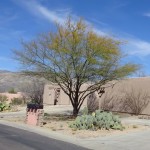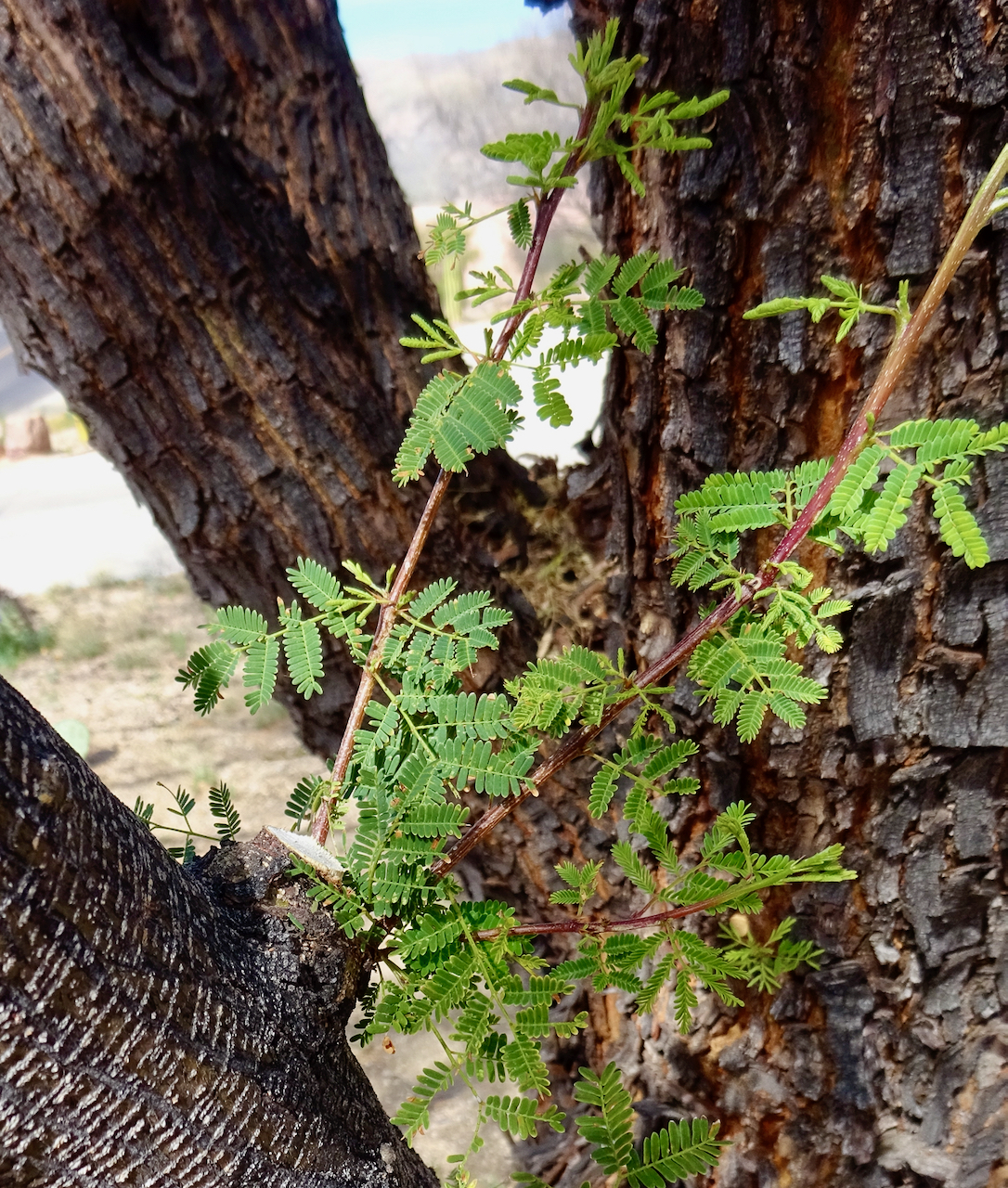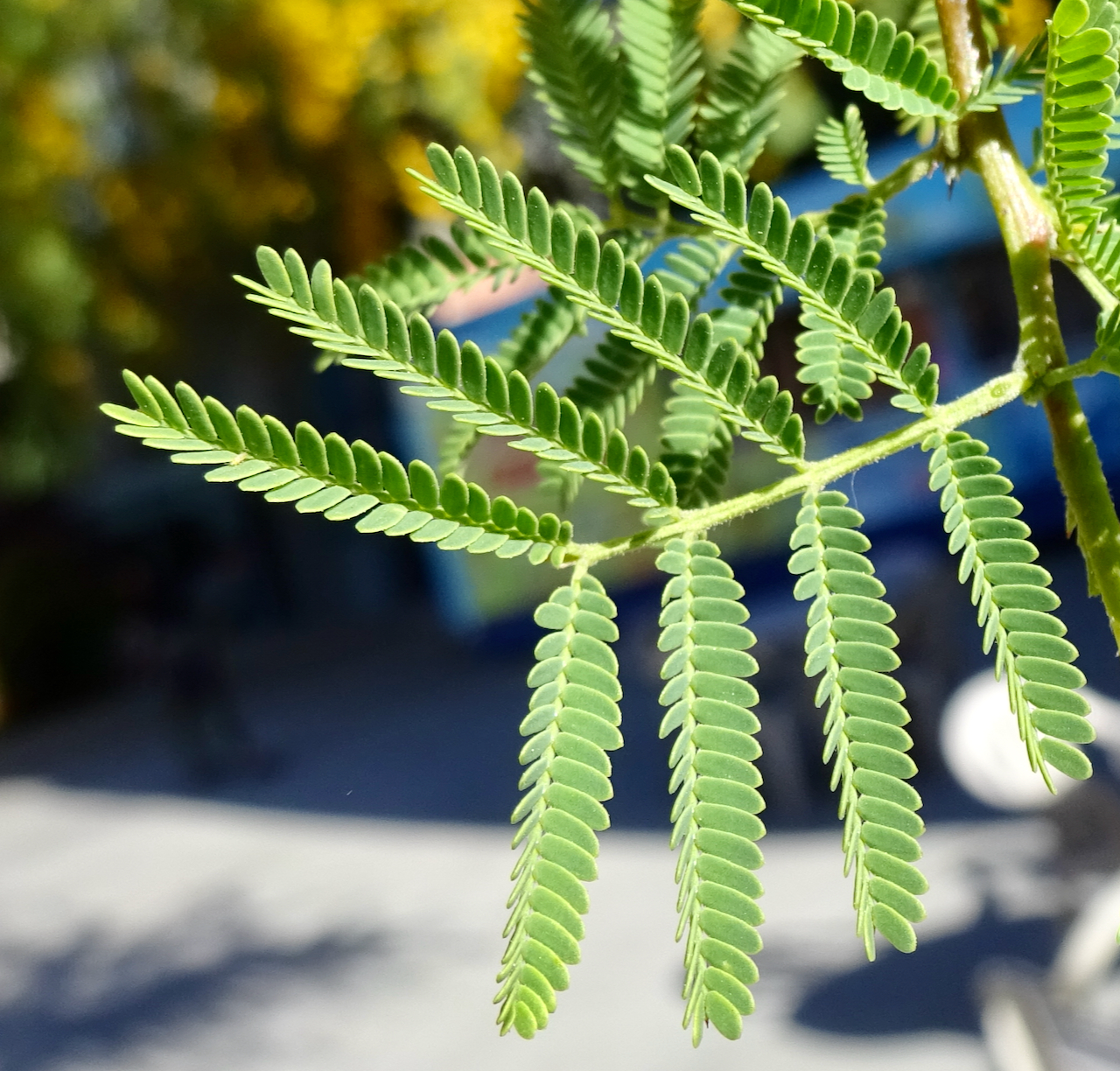Sweet Acacia, huisache
Vachellia farnesiana, Vachellia farnesiana var. farnesiana

About the Plant
In the Tucson area, the golden flowers of sweet acacia perfume the air in early spring, often as early as February. Sweet acacia is a variable species that can grow as a large shrub or a tree to about 30 feet. Nursery plants labeled as Vachellia farnesiana var. farnesiana (but may still be labeled as Acacia smallii) are reliably large and tree-form and are cold hardy in the Tucson Metro area. Plants labeled as Vachellia farnesiana (or Acacia farnesiana) are shorter and may be damaged in Tucson's coldest winters.
Grow sweet acacia in full sun and in deep soils with good drainage. Keep it away from strongly reflective surfaces. It can survive on natural rainfall once established. Sweet acacia may drop its leaves in dry weather or cold winters.
Sweet acacia is a short-lived plant with brittle wood. Large, overgrown plants may break in heavy winds. Pruning is difficult as new shoots sprout wherever pruning cuts were made (see photo above). For more information, see references below. There may be improved horticultural selections available. Ask at your local nursery.
Notes:
- Previous scientific name for Vachellia farnesiana was Acacia farnesiana. Previous scientific name for Vachellia farnesiana var. farnesiana was Acacia smallii.
- Some scientists believe sweet acacia is native to Central America or South America. In Arizona it is listed as native to the Baboquivari Mountains but it has spread and is found outside cultivation in Pima and Maricopa Counties. Sweet acacia has naturalized throughout the warm parts of the world and is considered a pest species in Australia, Hawaii, and other areas. The plant is not on the SEINet plant checklist for Saguaro National Park-Rincon Mountain District. Thus, it is considered a non-native plant on this website.
- Allergy Alert: some people are allergic to the pollen of sweet acacia
Wildlife value: may attract insects
More Information
Horticultural information from ASU (includes ethnobotanical information)
Information from Invasive Species Compendium
Map of distribution in the US (yellow is rare, blue-green is adventive)
Technical botanical description from SEINet
In books:
Native Plants for Southwestern Landscapes by Judy Mielke, page 49 (as Acacia farnesiana)
Trees and Shrubs for the Southwest by Mary Irish, page 92 (as Acacia farnesiana)








